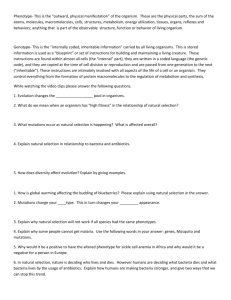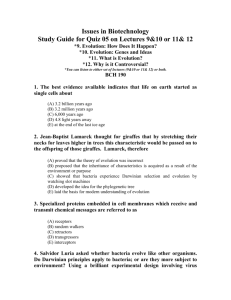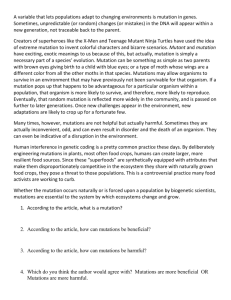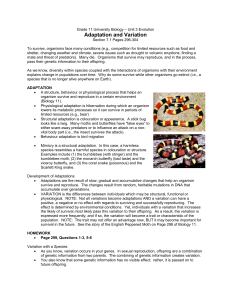Answers - sutton8science
advertisement
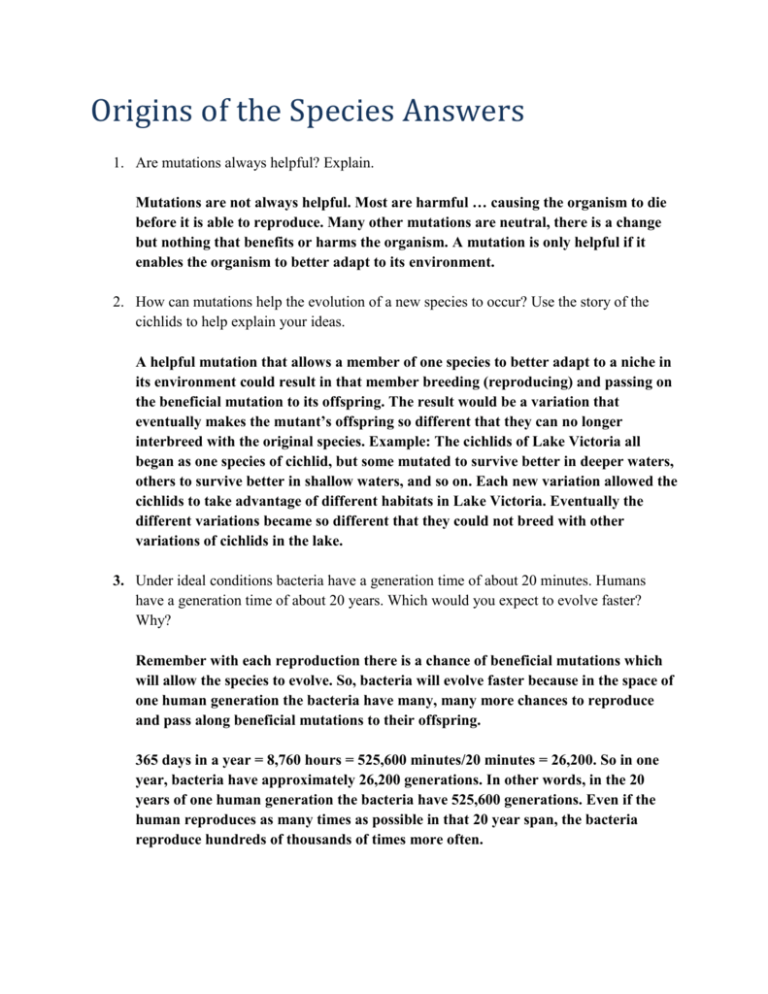
Origins of the Species Answers 1. Are mutations always helpful? Explain. Mutations are not always helpful. Most are harmful … causing the organism to die before it is able to reproduce. Many other mutations are neutral, there is a change but nothing that benefits or harms the organism. A mutation is only helpful if it enables the organism to better adapt to its environment. 2. How can mutations help the evolution of a new species to occur? Use the story of the cichlids to help explain your ideas. A helpful mutation that allows a member of one species to better adapt to a niche in its environment could result in that member breeding (reproducing) and passing on the beneficial mutation to its offspring. The result would be a variation that eventually makes the mutant’s offspring so different that they can no longer interbreed with the original species. Example: The cichlids of Lake Victoria all began as one species of cichlid, but some mutated to survive better in deeper waters, others to survive better in shallow waters, and so on. Each new variation allowed the cichlids to take advantage of different habitats in Lake Victoria. Eventually the different variations became so different that they could not breed with other variations of cichlids in the lake. 3. Under ideal conditions bacteria have a generation time of about 20 minutes. Humans have a generation time of about 20 years. Which would you expect to evolve faster? Why? Remember with each reproduction there is a chance of beneficial mutations which will allow the species to evolve. So, bacteria will evolve faster because in the space of one human generation the bacteria have many, many more chances to reproduce and pass along beneficial mutations to their offspring. 365 days in a year = 8,760 hours = 525,600 minutes/20 minutes = 26,200. So in one year, bacteria have approximately 26,200 generations. In other words, in the 20 years of one human generation the bacteria have 525,600 generations. Even if the human reproduces as many times as possible in that 20 year span, the bacteria reproduce hundreds of thousands of times more often.
